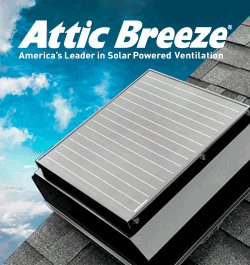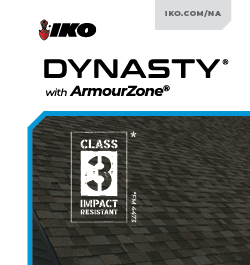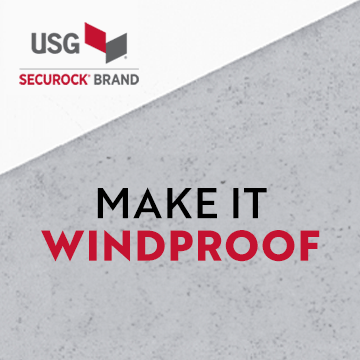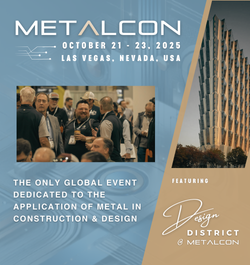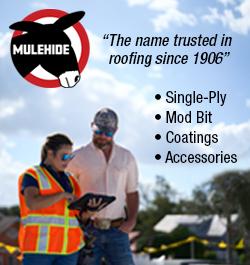Stone Coated Roofing
« Back To Roofers TalkAnybody there experienced with installation of Gerard stone coated metal? I have to estimate how many labor hours would it take to install batten shake matal roof on a 2-storey building, 8/12 pitch. 40 sq job, some valleys, 2 skylights, no tear-off.>>>
Sometimes silence is deafening. :unsure: :dry:>>>
The batten spacers are a much faster way of setting up the battens. The first two battens at the bottom should be set with chalklines, but once these are in position, the rest of the batten field is really fast to install with the spacers. We use chalklines all the time with other systems, but with this one, the spacers are the way to go.>>>
Thanks Paul. I'll look into getting one of those, and the shear too. I don't have one and you can't have too many tools.>>>
You can find the tools shown in the install manual found here: http://www.allmet.com/Documents/Allmet_Product_Manual.pdf, on pg. 6.>>>
Then this is different from the Tinsmith's, Chicago's and and connectict's? DO you have a link? And to the shears and spacer bars?>>>
The steel brake is a specially made unit that allow you to work the steel shingles. Working without one on this product is just plain nuts. When you get yourself set up in this system, you need to buy the steel brake, the shears, and the spacer bars. The rest is normal tooling. The steel brake has a pedal part that allows you to shut the jaws while using two hands to hold/bend the metal.>>>
What was meant by a steel brake? Like my 4'Conneticut?>>>
No, I got delivery of shingles only, but no trims and accessories. All we did was to install underlayment and battens. Now we are waiting for the rest. It might come as late as the end of the next week. But I post pictures as soon aswe are done. >>>
OK, good luck. And post us some before/during/after pictures. We can't have MikeNZ (also known as Vaa Fakaosifolau) be the only one with the picture showcase! :)>>>
Well, Wish us luck. We have done the training. We have all the equipment and start the job the next week. Hope it goes well :ohmy:>>>
There is a lot of information here. Some correct, some not.
Check out Gerardusa.com. On this website, you can find and download the installation manuals for all of our products. Pgriz is pretty much dead on with the install details. There is also a link to download our warranty. Our warranty is a lifetime warranty that covers the appearance of the panels.
We also offer installation training at our locations in Ca, Ks, Tx, and Fl. Call us at 800 23 ROOFS (800 237-6637) for more details.
>>>
Agnes, a few more thoughts.
I am assuming your company has NOT installed granulated steel products before. If so, you have to buy the appropriate equipment from the manufacturer as regular shears and brakes will be ruined very quickly by the granules on the steel. You will need at least two batten spacers, a panel shear and a steel brake. You will also need to replace the hand snips after every couple of granulated steel jobs.
For installing the battens, we use nail guns, and 18V battery operated circular saws. Each worker should have a chalk-line, hammer, utility knife and hand snips. For driving the screws, we find the 18V makitas to be excellent - light, strong and durable. For cutting the panels, you will need either hand snips or the shear. We do not recommend you cut the metal with the grinder because it leaves an exposed metal edge, and the steel filings left on the roof will rust, marring the visual appearance.
It is really easy to ruin panels unless your installers have taken the courses given by the manufacturer, and PRACTISED cutting the panels. The material is not very forgiving of mistakes, so you really have to get the cut right on the first try. So if your team does not have much experience with the product, make them practice cutting and bending on a sacrificial panel or two before you let them loose on the actual installation. It also take some practice to bend the material without scraping the granules off the surface and leaving it marked.
For estimating material, you really should follow the estimating method suggested by the manufacturer, as the usual method of figuring the area and adjusting with a waste factor can throw you off since the panels are quite large. The method is described in their installation manual.
As with all materials, if your installation crew keeps their brains well oiled and in good working condition (and apply them as necessary on the job), you should have minimal problems. Most water-proofing and flashing methods used with metal roofing will apply to this type of material.
PS: If your guys are not too sure about the measure twice, cut once idea, you could invest in a shingle stretcher machine. :huh: :lol:>>>
Thanks for the details. These are very helpful! >>>
Sorry about the delay, Agnes. Darn computer problems again.
On flat sections, you can get up to 1 square per hour for a two-man team. Laying down the battens is pretty quick, and reasonably straightforward. If you are levelling a deck, or going over composition roofing, then you will probably need the vertical boards as Robby suggests. Hips don't slow you down too much, but valleys are probably the most difficult part of the install of this type of material. So on your average "cut-up" roof, I'd estimate 4-6 manhours per square. At 6 manhours per square, you're looking at 240 manhours, divided by 4 workers, gives you about 60 manhours each, or 7-8 days of work. Once you're experienced, you can probably cut that down to 1-2 manhours per square, but it really depends on the degree of complexity you have to deal with. Obviously, a straight gable-to-gable 4:12 roof with minimal penetrations will be very fast. Put four peaked dormers on the same roof, and you've increased the workload at least four times.
If your team have little experience with steel, you may want to cut your teeth on the steel shingles (granite ridge or equivalent), as they are battenless systems, and be installed almost as fast as asphalt shingles. Edge and valley detail will slow you down even with the metal shingle products. That's just the way it is.>>>
Looks much better than our asphalt shingle roofs here :-)>>>



